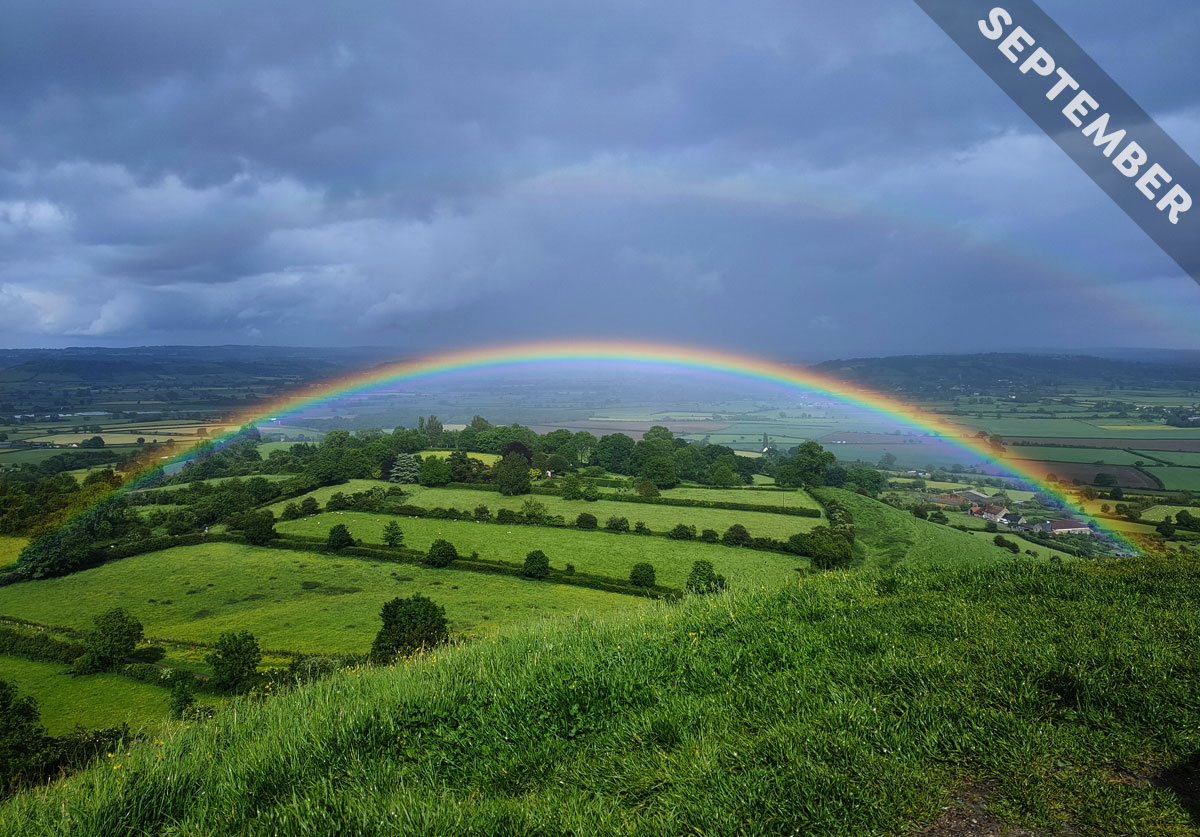Rainbows and the Colour of Hope
For many cultures, rainbows are symbols of hope. Why is that? Perhaps it is because of the way they appear as sunlight breaks through dark clouds after a shower has passed – just like this rainbow did that was spotted by Kerry Brooker (Member 56,743) from the top of a hill, known as Glastonbury Tor, near Glastonbury, Somerset, England. But why do rainbows form as showers pass? Why such specific circumstances? The answer’s found in the magical interplay between weather and optics.
The best place to start is with the sorts of cloud that produce rainbows. Since you need direct sunlight to shine onto a curtain of raindrops for a rainbow to appear, it is localised shower clouds that are needed – clouds like Cumulus congestus and Cumulonimbus. These rain in specific places instead of broad areas. As a result, they can lead to distinct boundaries between rainfall and sunshine. You’ll never see rainbows beneath extended rainclouds like Nimbostratus because these cover such huge areas and taper away at their edges, leaving overcast skies in their wake and no chance of direct sunlight shining onto their rain. The shower clouds that do produce rainbows tend to develop from Cumulus that have been building through the afternoon, and this turns out to be an important detail for why rainbows appear as showers have passed.
You can only see a rainbow when you are looking towards the rain shower with the Sun shining from directly behind you because the effect is the result of light reflecting back at you as it shines through the drops of water. As the rainbow-forming shower clouds tend to form towards the end of the day, you are most likely to be looking at the shower in the east as the Sun shines from behind you in the west. And most of Earth’s weather – in the mid-latitudes, at least – moves from west to east. In other words, the sunlight will be shining onto them from behind you in the west as the shower clouds head away from you to the east. These are all generalisations, but they help explain why, in many regions, rainbows appear with the brightening after a downpour.
A rainbow’s sense of hope comes also from the way its colours shine bright against a dark sky. Its hues appear all the more intense in contrast to the darkened backdrop of departing showers. Three light-based mechanisms are involved: refraction, dispersion, and reflection. The white light of sunlight is an amalgamation of all the different visible wavelengths. As it shines at a glancing angle into and out of a raindrop after reflecting off its inside back surface, this white light bends, or refracts, with different wavelengths bending by different amounts. Longer, red-looking, wavelengths of light bend less than shorter, blue-looking, ones, and so the light is separated, or dispersed, into a spectrum of colours. This combined effect of reflection, dispersion, and refraction concentrates the spectrum most at certain angles, which define the arc of the rainbow to be where the light looks intense against the shadowed shower clouds beyond.
‘I hoped that if we got to the top of Glastonbury Tor just as the rain shower passed,’ said Kerry, ‘we’d have the opportunity to see a rainbow form.’ In fact, she saw both a primary rainbow and a fainter secondary rainbow outside it (formed when the sunlight reflects off two points at the backs of the raindrops). The Sun was still high in the sky at this time of the day, so in fact she could see the bow only because she was looking down at the shower from elevated ground. No rainbow would have been visible from the bottom of the hill, as the angles of light would not quite have worked. Kerry’s hope, in other words, paid off.
Primary and secondary rainbows spotted from Glastonbury Tor, Glastonbury, England by Kerry Brooker (Member 56,743). View it in the gallery.



